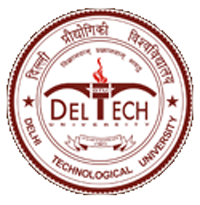Please use this identifier to cite or link to this item:
http://dspace.dtu.ac.in:8080/jspui/handle/repository/22082| Title: | Analysis of penetration microstructure and mechanical properties of some non ferrous alloys using gtaw process |
| Authors: | Kumar, Pawan |
| Keywords: | Penetration analysis Microstructure GTAW process Titanium alloys Non-ferrous alloys Arc pressure |
| Issue Date: | 2012 |
| Abstract: | Gas Tungsten Arc Welding process (GTAW) is the best preferred welding process for high strength aluminium and titanium alloys due easier adaptability and better economy. In pulse GTAW process, the current is supplied in pulses rather than at constant amplitude. Arc pulsing is mainly used for achieving better penetration without excessive heat built-up and joining of lesser thickness plates. The better heat input control of pulsing makes this process best suitable for welding of precision parts. The pulse process parameters like pulse current, base current, pulse frequency and pulse duty cycle, have the most important role for optimizing the bead geometry characteristics and mechanical properties of the weld. The pulses of higher current are found to generate a large variation of pressure in the arc. The arc pressure causes the turbulence in the weld pool, which allows the heat to penetrate deeper into the base metal. The amount of the base current affects the rate of cooling and solidification. Higher pulse duty cycle indicates the tendency towards continuous current. Arc pulsation is the most responsible factor for grain refinement, lesser risk of cracking, reduction in width of HAZ and less distortion. The present research work replicates the application of GTAW process for joining of aluminium and titanium alloys with sinusoidal AC wave. Aluminium alloy 7039 (AA7039) is a heat treatable and weldable aluminium-4.5% Zinc-2.5% magnesium alloy. A demand for lighter and stronger aluminium armor for protection against high explosive shell fragments in the early 1960s led to the introduction of this alloy. Magnesium is alloyed with aluminium for increasing mechanical properties, corrosion resistance and easy machinability. Zinc is usually added to improve mechanical properties through formation of hard intermediate phase, such as Mg2Zn. AA7039 aluminium alloys are widely used in aircraft structural applications and are susceptible to localized corrosion in chloride environments. AA6061 aluminium alloy (Al-Mg-Si alloy) has gathered wide acceptance in fabrication of food equipments, chemical containers, passenger cars, road tankers and railway transportation systems. In any structural application of this alloy consideration its weldability is of utmost importance as welding is largely used for joining of structural components. The preferred welding process of aluminium alloy is frequently Pulsed GTAW due to its comparatively easier applicability and better economy. Pulsed parameters improve the mechanical properties of the welds of this alloy due to grain refinement occurring in the fusion zone. Titanium has high melting point and can be alloyed with Al, Sn, V, Mo etc. Some of which are known as Alpha–stabilizing elements and others as Beta–stabilizing elements. However Titanium is an expensive metal. Titanium and its alloys have been considered as one of the best engineering metals for industrial applications due to the excellent combination of properties such as elevated strength to weight ratio, high toughness, excellent resistance to corrosion and good fatigue properties. Titanium alloy grade–5 (Ti-6Al-4V) has gathered wide acceptance in fabrication of vessels, blades, discs, military vehicle armors, airframes, rings, fasteners, forgings and biomedical implants. In this research work, the effects of various current and frequencies of GTAW process on bead geometry (bead penetration, bead width and bead height) and mechanical properties (UTS, microhardness and percentage elongation) of AA7039 have been studied. Also optimization of pulse process parameters with and without gas mixtures have carried out for bead geometry and mechanical properties of AA7039, AA6061 and Ti alloy Grade–5. Also variation of microhardness and metallurgical studies of the above welded alloys have been carried out at various process parameters. |
| URI: | http://dspace.dtu.ac.in:8080/jspui/handle/repository/22082 |
| Appears in Collections: | Ph D Thesis |
Files in This Item:
| File | Description | Size | Format | |
|---|---|---|---|---|
| Analysis of penetration microstructure and mechanical properties of some non ferrous alloys using gtaw process.pdf | 6.09 MB | Adobe PDF | View/Open |
Items in DSpace are protected by copyright, with all rights reserved, unless otherwise indicated.



